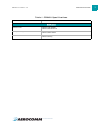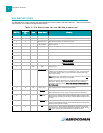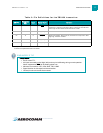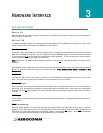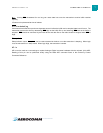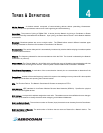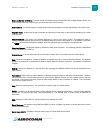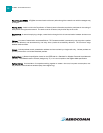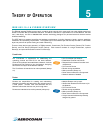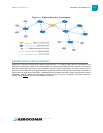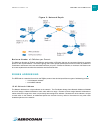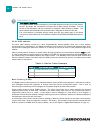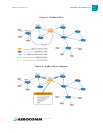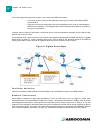
www.aerocomm.com
T HEORY OF OPERATION
5
IEEE 802.15.4 & ZIGBEE OVERVIEW
The ZB2430 uses the ZigBee protocol stack, a network layer protocol which uses small, low power digital transceivers
based on the IEEE 802.15.4 hardware standard. The 802.15.4 standard is a specification for a cost-effective, low data
rate (<250 kbps), 2.4 GHz or 868/928 MHz wireless technology designed for personal-area and device-to-device
wireless networking.
The IEEE 802.15.4 standard specifies the hardware requirements, including frequency bands, receiver sensitivity,
modulation and spreading requirements. The ZigBee layer is the software layer that sits atop the 802.15.4 PHY/MAC
layer and performs all packet routing and mesh networking.
There are three device types present in a ZigBee network: Coordinator (Full Function Device), Router (Full Function
Device), and End Device (Reduced Function Device). Each network consists of a single Coordinator, optional
Router(s), and optional Reduced Function End Device(s).
Coordinator
The Coordinator is responsible for establishing the
operating channel and PAN ID for the entire Network.
Once the Coordinator has established a Network, it allows
Routers and End Devices to join the Network; assigning
each device a unique 16-bit Network Address.
The Coordinator is intended to be mains powered (always
on).
• One Coordinator per Network
• Establishes Channel and PAN ID
• Responsible for Network formation and
maintenance
• Full Function Device
• Packet routing capabilities
• Mains powered (always on)
• Power down modes are not supported
• Network address of 0x0000
Router
Routers are responsible for creating and maintaining
Network information and determining the optimal route for
a data packet. Routers must first associate with the
Network before other devices can join through them.
Routers are intended to be mains powered (always on).
• Multiple Routers can be used
• Allows other Routers/End Devices to join
the Network
• Full Function Device
• Packet routing capabilities
• Mains powered (always on)
• Power down modes are not supported
• Unique netowork address dynamically
assigned by parent



